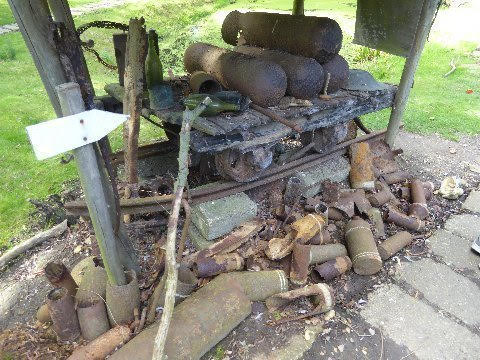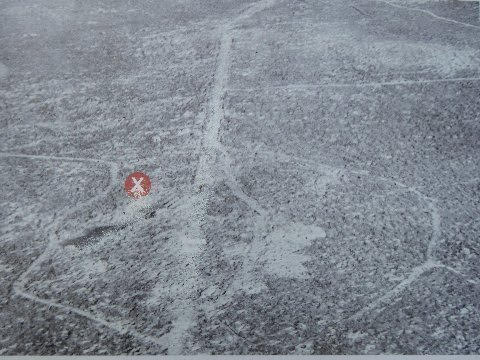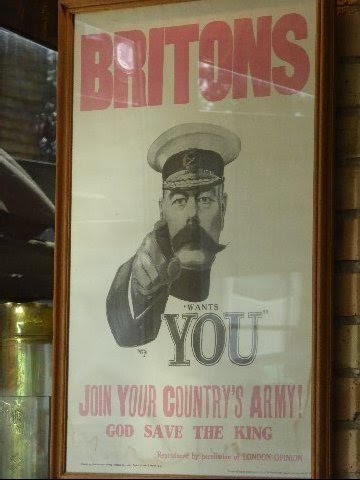Picto Diary - 26 September 2015 - Ypres

Above: Bishop observes Flanders Field WWI Museum in Ypres, Belgium. 26 September 2015.
Today, on our battlefield tour of WWI battlefield sights, "from the British point of view," we would visit various locations on the Ypres salient.
After the two week long retreat south from Mons, which started on 24 August 1914, the British Expeditionary Force (BEF) ended up on the Marne River, not 25 miles from Paris itself. French Chief of Staff Joffre realized that the threat to Paris of a German invasion coming through Belgium to the north was much greater than he had previously realized, so he rapidly cannibalized his armies on the French right to create a new army, the 6th Army, to head directly to the French left where they, joining with the BEF, would confront the two great German armies (1st Army - Von Kluck, and 2nd Army - Von Bulow) to save Paris. Troops, horses, and provisions were shipped by railway.
On 06 September 2015, The new, Sixth French Army, under the command of General Michel-Josef Maunoury, and the BEF, still under the command of John French, mounted a counter attack against the Germans at the Marne. Fortuitously, Von Kluck's troops, which under the Schlieffen Plan, should have encircled Paris from the east, turned West before reaching Paris, thereby exposing their right flank to the newly formed French Sixth Army. The allies at the Marne, in addition to having more troops, had the tactical advantage in the attack and stopped the German onslaught on Paris.
For over another month, well into October, occurred another series of battles which some historians call "The Race to the Sea." Each side would fight to gain access to the North Sea side corridor, the allies to ensure prevention of a German regrouping to sweep to their right for another assault on Paris, and the allies to prevent the same.
In October 1914, the BEF reached Ypres, Belgium, It was around this area that the BEF dug in. Lines which were to remain set for the remaining four year duration of the war were set.
Ypres was a salient where Brits were pounded from three sides, in 7 major battles, over the four remaining years of the war, after having pushed the Germans back from the Marne and the gates of Paris in September /October 1914.
Field Marshal Horace Smith-Dorrien, British UK Ypres Commander was fired in 1915 for advising the British War Council to give up the Ypres salient. Notwithstanding the likelihood of many lives being saved by ceding the salient to the Germans, the War Council felt that psychological damage to the war effort would occur by giving up turf previously gained. Also, the original lines of the salient included high points favored by BEF artillery leaders.
Ypres was ground zero for British action in WWI. Ypres holds a special place in British military lore. Not far from the English Channel, Ypres was close to home. All British soldiers wanted an assignment at Ypres. Sadly, too many got their wish. Over the course of the war, 325K British soldiers lost their lives at Ypres. Notwithstanding the likelihood of many lives being saved by ceding the salient to the Germans, the War Council felt that psychological l damage to the war effort would occur by giving up turf previously gained.

Above: Langemark German military cemetery. Langemark, Belgium. 26 September 2015.
Langemark cemetery is one of only four First World War German cemeteries in the Flanders region. In the whole of Belgium there are 13 First and Second World War German military cemeteries.
Oak trees above the graves remind that the oak leaf cluster, as the poppy is for the British, is the symbol of the German soldier.
40K German soldiers, who died in the Ypres salient, are buried in marked graves and trench graves at Langemark.

Above: Locale of first use by Germans of poison gas in WWI. Ypres salient. Belgium. 26 September 2015.
Patrick, battlefield guide, describes to our tour group, how poison gas was employed by the Germans.
The first use of poison gas came on 22 April 1915, at the start of the Second Battle of Ypres.
The Ypres salient ran for some ten miles and bulged into German occupied territory for five miles.
During the AM of 22 April the Germans .;poured a heavy bombardment around Ypres, but the line fell silent as the afternoon grew. Towards evening, at around 5:00 PM, the bombardment began afresh - except that sentries posted among the French and Algerian troops noticed a curious yellow-green cloud slowly drifting towards the line.
Puzzled, but suspicious, the French suspected that the cloud masked an advance by German infantry and ordered their men to "stand to" that is, to mount the trench fire step in readiness for a probable attack.
The cloud did not mask an infantry attack however. It signaled the first use of chlorine gas on the battlefield. Ironically its use ought not to have been a surprise to the Allied troops, for captured German soldiers had revealed the imminent use of gas on the western front.
The effects of the gas were severe. Within seconds of inhaling its vapor it destroyed the victim's respiratory organs, bringing on choking attacks.
As Patrick explained, releasing gas was not always reliable. The wind could shift... and often did. The Allies started using gas later in the war and found its use not always effective.
Within six months, crude respirators were issued to soldiers. Initially, soldiers discovered that masking their mouth and nose with a pad soaked in human urine would mitigate the effects of the gas.

Above: Hooge Crater British Cemetery. Hooge, Belgium. Ypres Salient. 26 September 2015.
There is a huge crater at Hooge which was the result of a massive explosion.
On 19 July 1915 the British decided to eliminate the concrete fortifications that the Germans were building with a limited but well-targeted attack.
The 175th Tunneling Company of Royal Engineers dug out a 57 meter long gallery over a period of five and one half weeks.
The 3rd Infantry Division then placed a 1,700kg charge of ammonal underneath the German fortifications.
The largest mine of WWI blew at 7:00 PM on 19 July 1915 leaving a nearly forty meter wide by six meter deep crater.
Hundreds of Germans, and a dozen Commonwealth soldiers who found themselves under the path of the fallen debris were killed during the explosion.
According to Patrick, folklore has it that the Hooge Crater explosion percussion was felt at 11 Downing Street, in London.
After the explosion, British troops stormed and took the area of the crater, but the crater area exchanged hands between the combatants several more times before the end of the war.
Hooge Crater was filled with water in the 1920's.

Above: Battlefield guide Patrick simulates the explosion of the Hooge Crater in WWI. Hooge Crater Cemetery, Ypres Salient. Belgium. 26 September 2015.
Patrick noted that underground mine explosions were an innovation of WWI. Entire coal mines in the UK were emptied of their miners who were recruited to join the Royal Corps of Engineers to facilitate the underground explosions.
Both sides mined from their trench positions to positions under the enemy.

Above: Hooge Crater today. Hooge. Ypres Salient. Belgium. 26 September 2015.

Above: WWI war debris exhibit. Hooge. Ypres Salient. Belgium. 26 September 2015.

Above: 1919 photograph of Hooge, Ypres Salient. Belgium. 26 September 2015.
Photo captured from a dirigible.
X marks the spot of the Hooge Crater.

Above: Our group inspects WWI trench system. Hooge. Ypres Salient, Belgium. 26 September 2015.

Above: Original WWI Lord Kitchener recruiting poster. Hooge. Ypres Salient. Belgium. 26 September 2015.
Herbert Kitchener was British Secretary of State for War, during WWI.
Unlike the French and German armies, the BEF army units were made up exclusively of volunteers - as opposed to conscripts - at the beginning of the conflict.
During the war, there were three distinct British Armies.
The "first" army was the small volunteer force of 400K soldiers, over half of which were posted overseas to garrison the British Empire. This "first army" was called the British Expeditionary Force (BEF), and was formed for service in France. Its soldiers became known as The Old Contemptibles.
The "second" army was Kitchener's Army, formed from the volunteers in 1914-1915 destined to go into action at the Battle of the Somme.
The "third" army was formed after the introduction of conscription in January 1916, and by the end of 1918, the army had reached its maximum strength of 4MM men and could field over 70 divisions.

Above: Lotus car. Ypres, Belgium. 26 September 2015.
From the sacred to the profane.

Above: "Last Post Ceremony," Menin Gate, Ypres, Belgium. 26 September 2015.
The ceremony is held nightly. On the night of our attendance... Sunday... there were at least 3000 people in attendance. Watching the ceremony was difficult but it is evident that WWI is not forgotten considering this attendance.
The buglers played "Last Post," and about 25 small groups deposited wreaths honoring a particular soldier whose name was introduced at the beginning of the ceremony.
All WWI Commonwealth casualty names are engraved on Menin gate.
Note Eton Mum's comments re Menin gate and Luke's participation below.
Addendum:
Thanks for sharing, much appreciated.
LaDoc and LaPsy,
Los Angeles, CA
Steve,
I couldn't attach it to my email but you will find this interesting: it is from the Summerfields School website, reviewing Our Boys Who Went To War. They are honoured every November 11th and their names read out in Chapel, as indeed are all those Etonians who died as well.
http://www.summerfields.com/Our-Boys-Review
Best wishes,
Eton Mum,
Palma de Mallorca
Steve, No doubt you and your fellow travelers will find the war trip and cemeteries most moving and interesting. When I was last there, with Luke in 2011, listening to the stories of all those many brave young Old Summerfieldians who lost their lives in the Great War, we could almost hear the dogfights overhead - so vivid were the fascinating commentaries.
Below is a picture of a contemplative Luke, aged 13. He planted a poppy cross at his great, great paternal uncle's grave at Meault Cemetery. Private John Humphries lost his life, aged 26, on 21st September, 1916 fighting with the Royal Warwickshire Regiment, 16th Battalion. The cemetery was designed by Sir Edward Lutyens and a haunting memory for me is the total peace and complete silence amongst those lines of cold stone graves where not even birdsong can be heard.
The Summerfields Red Choir was invited to lay a wreath and sing at several ceremonies but one of the most moving was that at The Last Post Ceremony, under the giant arch of The Menin Gate, Ypres, where the boys sang Crossing The Bar and The National Anthem- a reverend, sombre and truly humbling experience as we all stood together, heads bowed, with our private thoughts and prayers and remembered those who came from many distant lands, to die in the mud of Flanders. They will remain, immortalized, forever, their names carved in stone, "Lest We Forget".
Eton Mum
Palma de Mallorca

Above: Luke. Age 13. Ypres, Belgium... circa 2009.
Would have been wonderful to hear Luke's choir at Menin gate.
Blimey, someone is efficient!
It was great meeting you all. A real pleasure.
I hope that you are enjoying the rest of the tour and that the weather has improved.
My regular email contact address is [email protected] . This is my address for my other passion, rock'n'roll heritage. It makes a welcome change to come away from those sad 'silent cities' to the uplifting trivia of Beatle music!
Regards to all.
Bruce
Bruce Cherry
Managing Director
Access All Areas (GB) Ltd
Monumental Tours of Rock's Landmarks
www.londonrocktour.com
Telephone: Reservations & Operations: (+44) 07971 296 352
Marketing & Admin: (+44) 07887 703 725